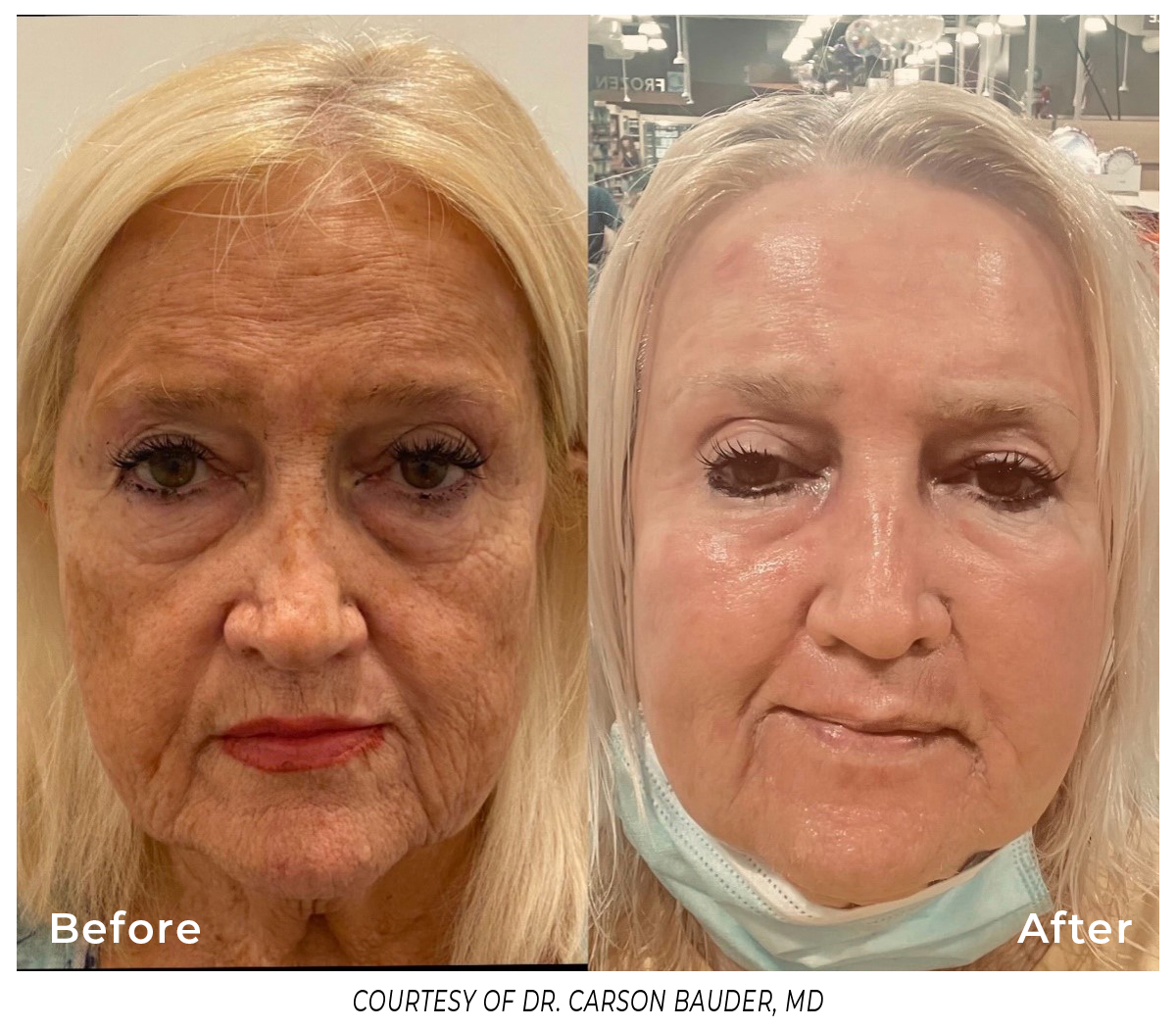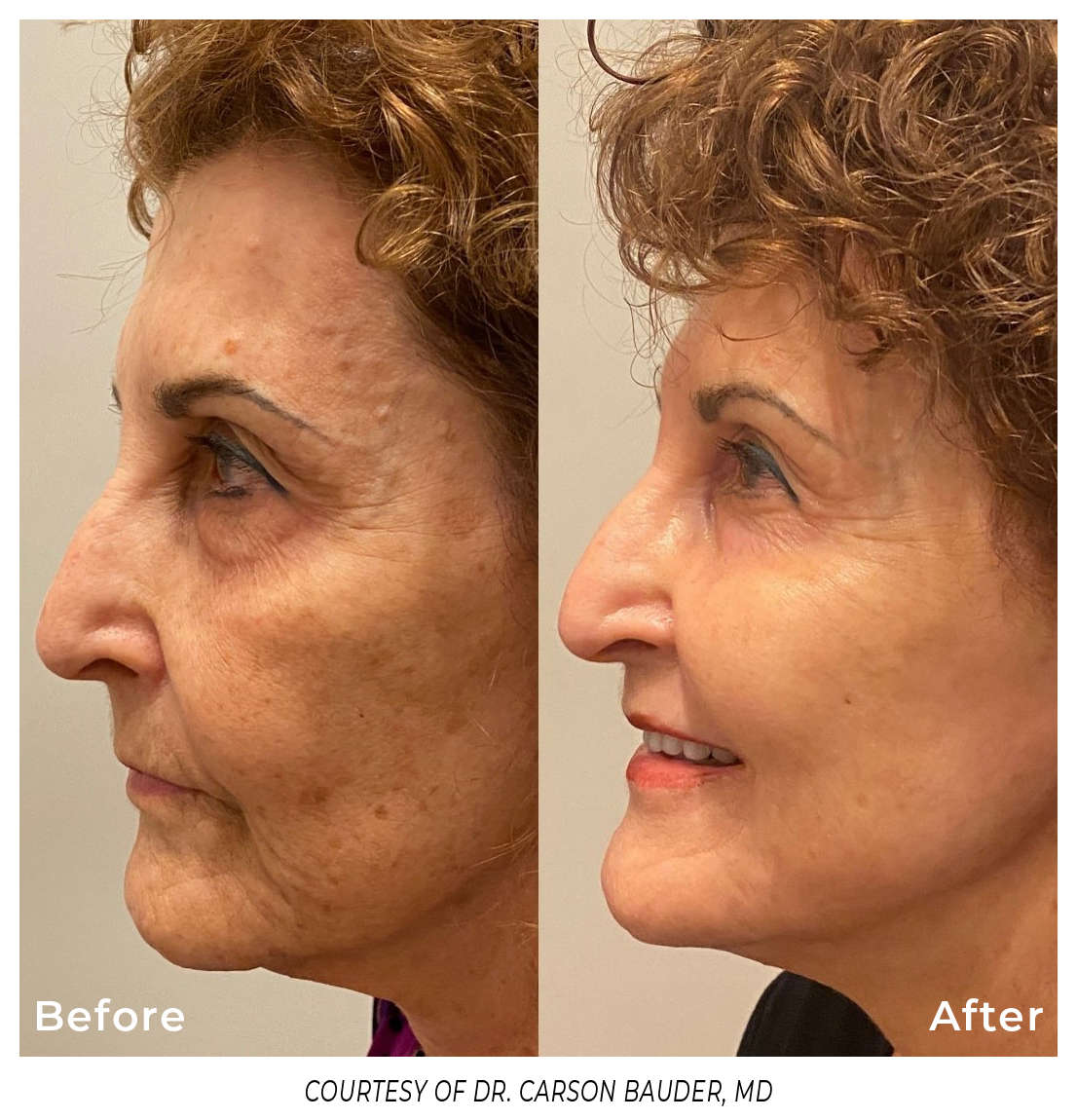A CO2 Fractional resurfacing laser is a carbon dioxide laser which precisely removes deep outer layers of damaged skin and stimulates the regeneration of healthy skin underneath. The CO2 treats fine to moderately deep wrinkles, photo damage, scarring, skin tone, texture, crepiness, and laxity. A fractionated CO2 treatment helps regenerate new collagen and consequently more youthful, healthier looking skin while allowing for shorter healing times and safer treatments than traditional methods. This is an ablative treatment and downtime should be expected.
How it works: Carbon dioxide laser beams penetrate the top skin layers through microchannels reaching into the dermis. It creates tiny microscopic areas of thermal damage that stimulate new collagen production and replace damaged skin surface by new epidermal cells.




The major difference between IPL treatments and Fractionated CO2 Laser Resurfacing is ablation. Fractional CO2 laser is a deep, ablative treatment for more intense cellular turnover. CO2 laser resurfacing is the original and most in-depth cosmetic laser treatment on the market. It is an ablative procedure, meaning that the laser energy destroys the outer layer of damaged cells to encourage new collagen production and prompt the body to create fresh, new skin. Recovery can take one to several weeks, but the results can be dramatic. Other lasers may be lighter or non ablative and do not yield as significant results.
Carbon dioxide laser resurfacing is usually performed in the office, using topical anesthesia and other cooling measures. Wrinkles around the eyes, mouth, and forehead may be treated individually, or a full-face laser resurfacing may be performed. Following the laser resurfacing procedure, the skin is cleansed and an occlusive ointment is recommended to be applied. You may be instructed to clean the treated areas multiple times a day with saline or a dilute vinegar solution. You can then apply Vaseline®, Eucerin®, or Aquaphor® to the area. This wound care is intended to prevent
the forming of any scabs, which can increase the chance of scarring and prolong the healing time. In general, the areas heal in 5 to 10 days, depending on the nature of the condition that was treated and the intensity of the laser settings. The stronger the settings, the longer the recovery time. Once the areas have healed, you can wear oil-free makeup to camouflage the pink-to-red color that is generally seen after laser resurfacing. Patients with darker skin tones have a greater risk of healing with darker pigmentation (hyperpigmentation), although anyone can be affected by this condition after a laser treatment. This may be minimized by the use of a bleaching agent before treatment. It also may be reduced with the continued use of this agent after healing..
Unless you have particular skin issues, skin infections, skin diseases or other medical issues that could preclude you from CO2 resurfacing, you are a good candidate. If your primary reasons for undergoing a CO2 laser treatment are related to age or sun-related skin damage, you may be a good candidate.
Initial results will be apparent within weeks of treatment. Full results, however, can be seen 3-6 months after the initial treatment, once the skin has completely healed. Improvements from a CO2 laser procedure may be seen for many years after treatment.
Typically 1 session may be sufficient depending on your individualized desired results. Many patients also benefit from subsequent treatments at lower settings called “micro laser peels”.
Sessions generally take approximately 90 minutes, based on the area(s) being treated. Treatment time is about 30-45 mins after 30-45 minutes of topical numbing time.
Daily sunscreen application is necessary after healing to protect the newly laser-resurfaced skin. A broadspectrum sunscreen (at least SPF 30) is recommended, which screens both ultraviolet B and ultraviolet A rays.. Liberal moisturizer application is also recommended after healing. You can resume application of Retin-A and/or glycolic acid products approximately six weeks after the procedure, or as directed by your healthcare provider.
Yes, there should be 3-7 days of downtime depending on the intensity of treatment.
It is recommended to wait until the skin is healed.